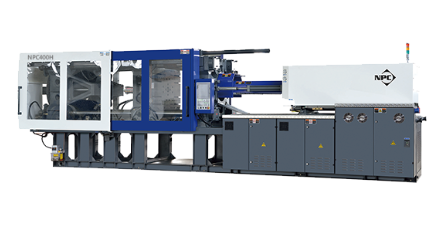

Manufacturing has come a long way with the advent of advanced technologies like injection molding and 3D printing.
Both methods offer unique advantages and can be used for various applications, but how do you determine which is better for your business?
In this blog post, we will explore the differences between injection molding and 3D printing and help you make an informed decision.
Injection molding is a cost-effective manufacturing process for producing large quantities of parts, with high initial setup costs for creating molds.
3D printing, on the other hand, is a newer technology that allows for custom parts without molds, with lower setup costs but potentially higher per-part costs. Injection molding is ideal for mass production, while 3D printing is suited for low-volume production or prototyping with customized needs.
For instance, if you plan to venture into an industrial scale of production, it is more advised to implement the use of an injection molding machine.
Injection molding allows for complex shapes, offers material flexibility, and provides excellent dimensional accuracy and surface finish.
3D printing offers design freedom for intricate geometries and rapid iterations for prototyping. However, 3D printing may have limited material options and lower dimensional accuracy and surface finish in some cases.

Injection molding has longer lead times due to mold fabrication, but is efficient once molds are created, making it ideal for high-volume production.
In contrast, 3D printing offers quick turnaround times, making it suitable for rapid prototyping and small-batch production. However, the layer-by-layer printing process may be slower for complex parts, limiting its efficiency for large-scale production.
Injection molding offers diverse material options, producing parts with varying mechanical properties. Injection molded parts are known for high-quality, consistent material properties, suitable for various applications.
3D printing materials may be limited in mechanical properties, but advancements have led to specialized materials for specific applications, expanding possibilities.
Injection molding is well-suited for high-volume production due to its ability to produce large quantities of identical parts in a relatively short time. This contributes to preference as a better option for industrial scale production.
3D printing is typically better suited for low to medium volume production, as it can be slower and more time-consuming for large quantities.
Both injection molding and 3D printing offer unique advantages and can be used for different applications depending on your business needs. They have their strengths and limitations, and the best option for your business will depend on your specific requirements.
Carefully evaluating your production needs, budget, and design requirements will help you make the right choice for your business and ensure successful manufacturing operations.
So, to answer the question, "Injection Molding vs. 3D Printing: Which Is Better for Your Business?" Injection molding is a better option after considering several contributing factors.
Contact us today for a premium quality injection molding machine at prices that won't break your bank.
By continuing to use the site you agree to our privacy policy Terms and Conditions.